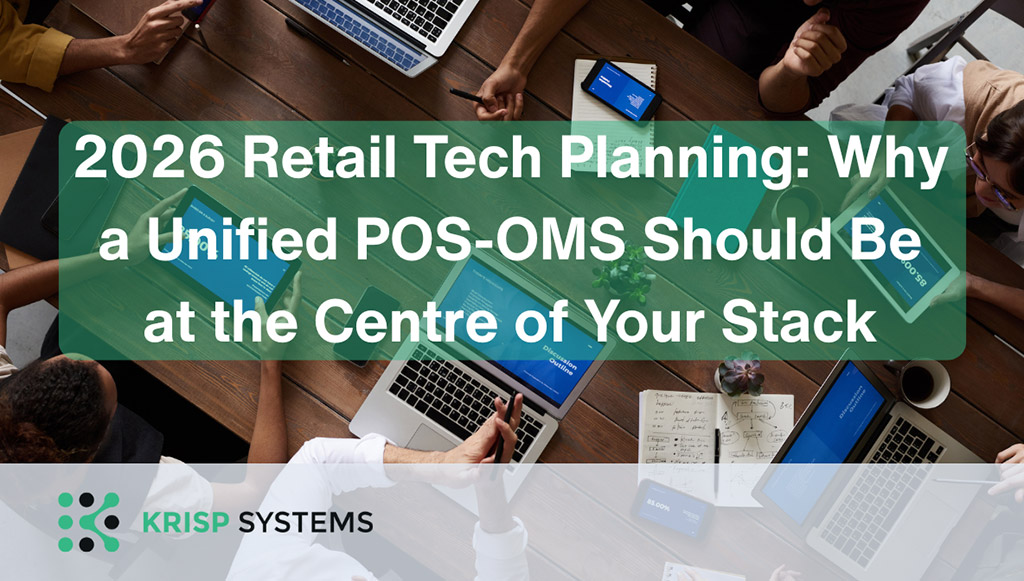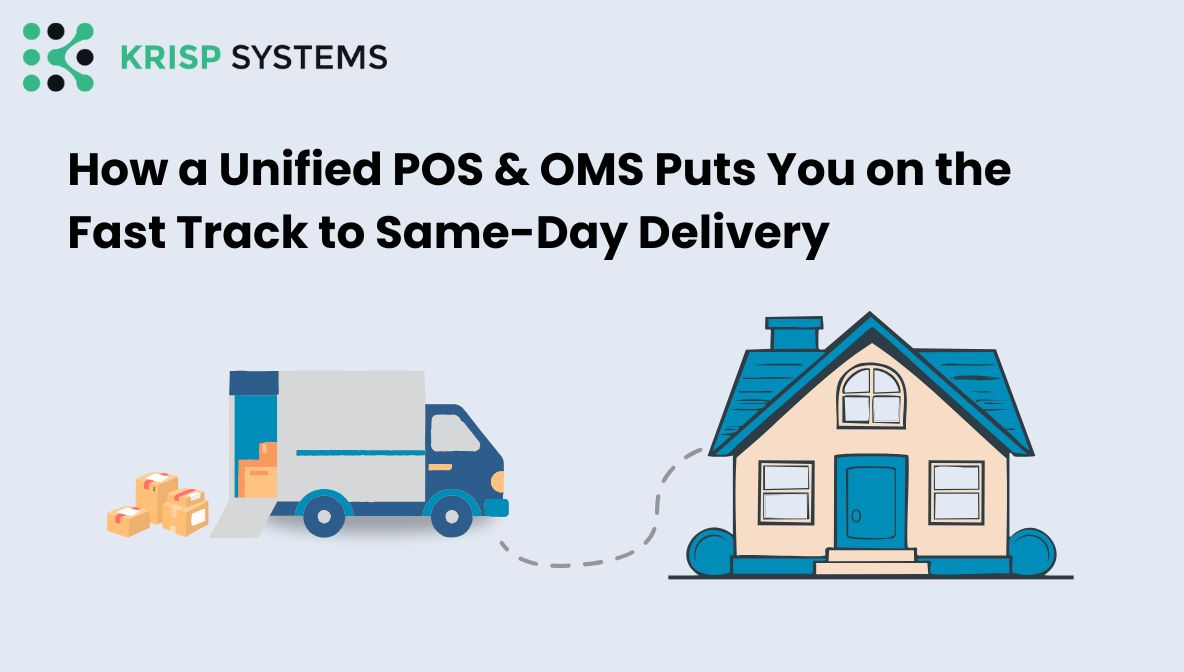Retail’s Next Planning Challenge
As 2025 comes to an end, retailers are reassessing their technology priorities. The modern retail environment is no longer about product range alone. Success now depends on how efficiently a business can manage products across every channel, from in-store to online.
Customers expect accuracy at every stage of their journey. They want live inventory visibility, fast order fulfilment, and convenient return options, whether they are shopping in person, online, or through social platforms.As retail leaders plan their 2026 technology investments, one question has become impossible to ignore:
Should your POS and OMS still operate separately?
The short answer is no.
Why Retail Tech Planning Needs a Unified Core
Every retail system, from ERP and CRM to e-Commerce and fulfilment, relies on accurate and synchronised order and inventory data.
When your Point-of-Sale (POS) and Order Management System (OMS) function as separate systems, information quickly becomes fragmented. Inventory visibility weakens, fulfilment slows down, and customer experiences become inconsistent.A unified POS-OMS connects all your retail touchpoints, creating one reliable source of truth. It keeps your operations aligned and your data accurate across every channel.
The Case for a Unified POS-OMS in 2026
1. Real-Time Inventory Visibility
Modern shoppers expect accuracy the moment they click “add to cart.” A unified POS-OMS provides live inventory tracking across stores, warehouses, and digital platforms.
This real-time visibility helps prevent overselling, stockouts, and delayed deliveries — common challenges for retailers using disconnected systems.
2. Smarter Order Fulfilment
Disconnected systems create friction in order management. When multiple channels compete for the same inventory, it can lead to confusion and missed sales.
A unified POS-OMS helps retailers:
- Automatically route orders based on location or stock levels
- Offer flexible fulfilment options such as Click & Collect, ship-from-store, or endless aisle
- Reduce shipping costs and delays through smarter order allocation
The result is faster fulfilment and a smoother customer experience.
3. Better Data and Decision-Making
With POS and OMS data unified, retailers gain a single view of performance across all channels. Sales, returns, and stock movement can be tracked in real time, enabling data-led decisions.
This clarity allows retail teams to forecast demand more accurately, identify slow-moving stock, and plan promotions based on reliable insights.
Imagine making confident decisions using a single, real-time dashboard rather than combining reports from multiple systems.
4. Improved Customer Experience
Unified systems do more than improve backend operations — they directly impact how customers perceive your brand.
When stock information is accurate, order confirmations are instant, and returns are simple, it builds trust. Over time, that trust leads to stronger loyalty and repeat purchases.
A unified POS-OMS is not just an operational upgrade. It is a better way to build relationships with customers.
5. Scalable for the Future
Retail continues to evolve. From social commerce to AI-driven recommendations, the pace of change shows no sign of slowing.
A unified POS-OMS offers the scalability needed to keep up. It gives retailers the flexibility to add new channels, integrate emerging technologies, and maintain consistency as they grow.
The ROI of Unification
A unified POS-OMS delivers measurable returns. Retailers that have adopted connected systems often report:
- A 20–30% reduction in operational inefficiencies
- Better inventory turnover
- Higher customer retention
- Fewer lost sales due to inventory inaccuracies
The ROI extends beyond cost savings. It strengthens resilience, helps teams adapt faster, and improves decision-making across the business.
Planning Your 2026 Retail Tech Stack
Here are a few practical steps for building your 2026 retail tech stack around unification:
- Audit your systems. Identify where information is duplicated or disconnected.
- Prioritise visibility. Choose technologies that consolidate order, product, and customer data.
- Adopt modular unification. Begin with your POS and OMS, then integrate other tools over time.
- Plan for flexibility. Make sure APIs and data structures can adapt as your business evolves.
Focus on the customer journey. Every tech decision should enhance convenience, accuracy, or satisfaction.
Conclusion: Build Your 2026 Stack on Clarity
Retailers that act now to unify their systems will enter 2026 with a clear advantage. Separate platforms create complexity, while unified systems bring clarity and control.
By placing a unified POS and OMS at the centre of your retail tech stack, you lay the groundwork for operational efficiency, data accuracy, and a better customer experience.
Your 2026 success story begins with connection.Transform your retail operations for 2026 with a unified approach.
Talk to our team about connecting your POS and OMS for end-to-end visibility.
Further Reading
The New Standard in Eyewear Retail: Unified POS + OMS
Recover Over 20% of Lost In-Store Sales with Endless Aisle



